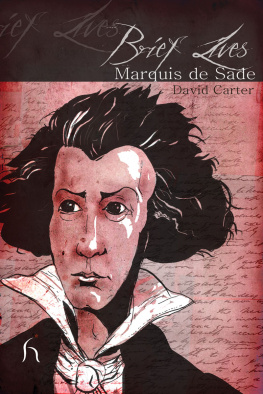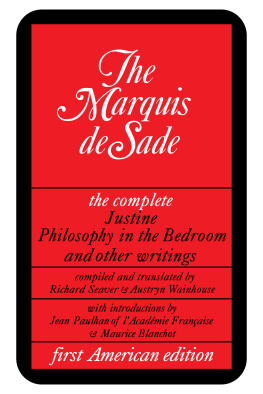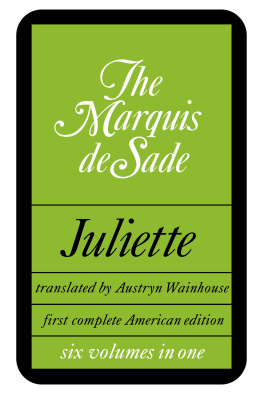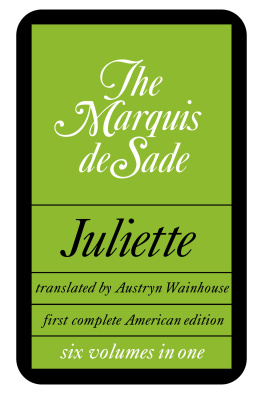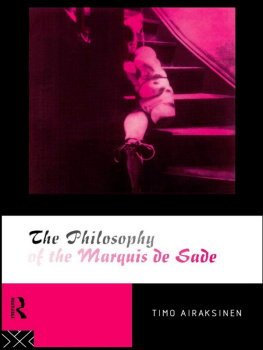A few comments on The Decadent Cookbook:
If meat is the hard-core-of-food-as-sex, The Decadent Cookbook is a walk on the wild side, a book for those who scorn not only the Prohibitions of Leviticus but also the dictates of common sense, good health and kindness to animals.
John Ryles City of Words Column in The Guardian
Lucan and Gray, whose fruity monikers may strike some as being suspiciously apt, have concocted a fabulous and shocking assemblage.
Christopher Hirst in The Independent
Arresting, too, is The Decadent Cookbook (including a recipe for cat in tomato sauce).
Nigella Lawson in The Times Books of the Year
Fancy boiled ostrich? Cat in tomato sauce? Or virgins breasts? The droll compilers trawl ancient Rome and other OTT times for kitchen oddities, mixed with literary off-cuts and pungent commentary. Delia Smith it aint.
New Stateman & Society
Start with a glass of blood, to set you up: recipe given in Jean Lorrains short story, helpfully included.
John Bayley in The Standards Books of the Year
An extravagant, shameless and highly entertaining book that could change the course of contemporary cuisine.
The International Cookbook Review
Get these decadent boys out of my kitchen.
Katie Puckrick on Granada Televisions Pyjama Party
A scholarly work, cleverly disguised as a very amusing read, from Medlar Lucan and Durian Gray. 223 pages of about every kind of weird or simply repugnant food from the Romans to the 19th century, with intriguing recipes for boiled ostrich, roast testicles, boneless frog soup and other obscure delicacies. Theres even a whole section on cooking with blood. The perfect gift for posh friends: it is the kind of book they always have in their loo.
Richard Cawley in Attitude Magazine
Forget Prue Leith and Delia Smith the cookery manual that every Venue reader needs is The Decadent Cookbook. If your palate is a little jaded, if you thought youd tried everything, then this is the book to make your smart dinner parties go with a bang (and several yech!s). The pseudonymous authors have trawled through the worlds great works of history and literature to assemble a truly sumptuous feast of decadent dishes and ghastly gastronomy.
Eugene Byrne in Venue
I point blankly refuse to eat some food called Virgins Breasts.
Sean Hughes in The Observer
entertaining. Scotland on Sunday

The editors would like to thank the following for their invaluable help:
Ciacio Arcangeli, Andrew and Ilia Bradbury, Professor J.B. Bullen, Roderick Conway Morris, Charles Baudelaire, Sara Ayad, Christine Donoughr, Edward Gibbon, Susan Hitch, John and Lindsey Hoole, Joris-Karl Huysmans, Sren Jenson, Nicola Kennedy, Marina Malthouse, Sophie Martin, Anne Murcott, Anthony Neville, Charlotte Ward-Perkins, Tino Pugliese, Cassius Dio, Brian Stableford, Sara Sygare, Lotta Sygare, Vera at the Bodleian Library, and Jeff Young.
The editors would also like to thank the following for their permission to include the literary passage selected by Medlar Lucan and Durian Gray to be read aloud during dinner:
Louis de Bernires for Labels Louis de Bernires 1993, David Madsen for an excerpt from Memoirs of a Gnostic Dwarf David Madsen 1995, Brian Stableford for his translation of A Glass of Blood by Jean Lorrain taken from The Dedalus Book of Decadence (Moral Ruins) - edited by Brian Stableford and first published in 1990, Editions Gallimard in Paris for an excerpt from Andr Pieyre de Mandiargues LAnglais dcrit dans le chteau ferm 1979 Editions Gallimard.
The editors would also like to thank Victor Gollancz Limited for permission to reproduce three recipes in The Decadent Sausage chapter from Antony & Araminta Hippisley Coxs Book of Sausages (1987).
The editors would also like to thank the Mansell Collection for permission to reproduce The Ill-swept floor a copy of a mosaic floor by Heralitus, A.D.200 and My poor Medos, I shall be forced to eat you so that you can keep your poor master an engraving by C. Hamlet after Drauer.
C ONTENTS
For three brief but memorable years, Medlar Lucan and Durian Gray ran their own restaurant - The Decadent - on the first floor of a house in Edinburgh. It was a small, dark, luxurious place with a dcor and atmosphere all its own. There were two dining-rooms: the first, as you walked in, panelled in ebony, the second hung with crimson and bottle-green silk. Deeper inside were three cabinets particuliers. These were snug little rooms, each about the size of a railway compartment, with a table that would seat up to six. Cabinet N1 was a monastic wooden box, bare, ascetic, penitential, with pale cream candles and pewter plates. N2 was the opposite - a sybarites paradise upholstered in Fortuny silks and velvets, richly coloured, heavily perfumed. N3 was known as the Chart Room. It had a nautical theme (inspired by a passage in Huysmans A Rebours) with portholes looking out into tanks full of fish and lobsters, a ceiling hung with navigational equipment (sextants, dividers, compasses, etc.), coils of tarred rope, posters of transatlantic liners, and a speaking tube for sending out orders.
If you took one of these cabinets it was yours for the night - with no questions asked. Cushions, incense, musicians, liqueurs - any stimulants you cared to name - would be brought at any hour. The cabinets made very wonderful couchettes. Sound did not travel between them, and they welcomed conspirators of every kind - artistic, political, amorous, or simply friends determined to shut out the world for a night.
The waiters were all young, male and very good-looking. Most were resting actors. Their standard outfit was the long white apron, black trousers and bow tie of Renoirs caf paintings, but you might equally see them as servants from Longhis 18th century Venetian suppers, with powdered wigs, breeches and silk stockings; or costumed la turque with shalwar and embroidered waistcoats. They could be Renaissance courtiers, Swiss guards, marshals of Napoleons Grande Arme, hospital porters, airmen of the Second World war Once, by special request, they blacked up, oiled their bodies, and wore nothing but white satin tangas. They were often thought - wrongly - to be available for rent, and more than one lecherous alderman was presented with his bill earlier than he had bargained for after presuming too freely on this account.
A taste for the theatrical was also evident in the accoutrements of the place. Strange relics of gastronomic history would appear: food was served in a rare surviving example of Soyers Magic Stove, birds were flamboyantly roasted on spits turned by a vastly complicated array of cogs, clockwork and chains; they had a replica of Rossinis famous silver syringe for injecting pt de foie gras into macaroni; and the cutlery, napkins, pepper and salt came to the table in a cadenas - a boat-shaped vessel, made of gold, silver and enamelled copper, used by medieval French kings These were the fruit of afternoons in antique-shops and auction-rooms, where Medlars expert eye could pick out a single fine item from heaps of undistinguished junk.
Everything at The Decadent was idiosyncratic, but nothing more so than the food. Durian and Medlar poured all their turbulent energy, fantasy, playfulness and aesthetic extremism into a series of menus which managed simultaneously to make your mouth water and your hair stand on end. As well as being outrageous and unfailingly bizarre, the food was always exquisitely cooked. Even when you were eating cat in tomato sauce, stewed bulls genitalia, or armadillo sausages, you felt you were in safe hands.
Next page


